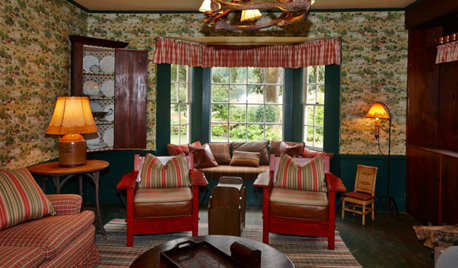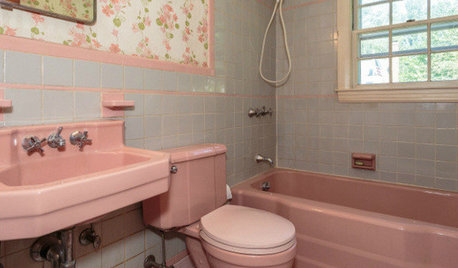The History And Future Of Roses In Review (RIR)
The following article “The History And Future Of Roses In Review” was sent to American Rose Society (ARS) many months ago, for consideration for publishing in the “American Rose” magazine. Believing it would make for interesting reading as well as its educational value for ARS members.
ARS Editorial Advisory Committee of two (2) rejected it, stating it was not something ARS members would be interested in, to quote ARS: (“fit for our magazine readership”). Amazing how two people can possible foresee, what approximately 18,000 ARS members would be interested in reading? While ARS continues to ask for articles from members, what type of material does it consider suitable, for readers of the Rose magazine? Should an article be a bit controversy (telling it the way it is), showing ARS or one of its committees in less than positive light, ARS refuses to publish it. Had the ARS chairman of RIR written the article, would it have been rejected? From my point of view, the rejection is outright censorship of a member’s freedom of speech by the American Rose Society. Everyone has a right to express an opinion, because ARS may not agrees with it, does not mean the opinion is wrong. As a democratic society, entitles each member to speak to various points. Preciously why the article was sent in ARS to be published. ARS has a clause in the magazine regarding published material; stating “opinions expressed are those of the author and not necessarily those of the American Rose Society or its officers or directors. So what was in the article ARS considered unfit, or that its readers should not know?
In about 1992, ARS published a column in the Rose magazine called “ Letters to The Editor”, changed in 1996 to “Members Forum” where members were able to express opinions and suggestions. The new 2000 administration discontinued it, because many times did not place ARS in too favorable light. This may very well be, considered the start of censorship of member’s freedom of speech by ARS. In the first six months of this year alone ARS lost 620 members, why? Maybe if ARS reinstated a similar type of column, members would have an opportunity to express themselves and/or let ARS know why they were dropping their society membership. How is it possible for ARS to address and find a solution to a problem, when not sure what the problem may be?
12-12-04
THE HISTORY AND FUTURE
OF
ROSES IN REVIEW (RIR)
By: Ronald Schwerdt
Going back over a century of American Rose Society (ARS) history, Roses In Review (RIR) did not happen overnight. It was created over a great period of time; thru pain taken efforts on the part of many dedicated ARS members, with a specific purpose in mind. In the early 1900’s, little did its originators realize the magnitude to which POP would expand in the 21st century, and still adhere to its founders’ original concept. Whatever name referred to over the years, its primary mission remains the same. Advise members of new varieties of roses being introduced in America and provide up to-date, authentic and accurate information on all aspects pertaining to roses and their culture. Maintain a compilation of records (POP/ RIR) on performance and ratings, of rose varieties grown by ARS members in their gardens. To accomplish this humongous challenge, over the years various methods were tried and retried several times, to accurate record elements that make up the present RIR history. The following is a detailed sequence of historic events that transpired as RIR expanded over the years, as recorded in American Rose Society annuals and the Handbook for Selecting Roses.
Listed in the 1916 annual (ARS’s first edition), is a group of (70) Hybrid Tea and (27) climbing roses as a partial presentation of varieties “Made In America”, called an “Official Catalogue of Roses”, that eventually became part of “Proof Of the Pudding” (POP). At that time in ARS history, of the 289 ARS members, 53 were amateurs, the rest professional rose growers.
To adequately serve its members requirements, ARS established National Testing Gardens in various parts of the United States. The 1919 ARS annual reported on roses grown in these test gardens during 1917 / 1918. With these reports, the gathering of accurate data on roses was on its way. As early as 1921, ARS members received in their annual a return card asking them to respond to what roses they grew, that did best for them. These cards became ARS first official record cards, listing information such as Bud; Bloom; Foliage; Bark & Twigs; Growth Size; Blooming and Average Hardiness. These “Referendum Reports” in the 1922 annual, was known as an “Official List Of American Roses”, listing the best varieties in order of their classes and may well be considered ARSs start of a system on rating roses.
The 1925 annual return cards, asked readers to supply comments on its new rose list published in that issue. From the returned cards, ARS once again compiled records of performances of rose varieties by members growing them in their gardens. This information appeared in the 1926 annual as Proof Of The Pudding (POP). How the actual term (POP) originated is unknown, I surmise it is a term coined by the annuals editor, replacing what formally was called “Static Referendums” in 1922. The published results of response to this type of rating system drew so much interest from ARS members, that the system with some modifications has been expanded and published each year, except 1929. Known for 63 years as POP, in 1989 changed its name to Roses In Review (RIR), but its primary focus remained the same, rating roses in commerce grown in North America.
As roses were becoming a major flower among gardeners, ARS received many inquires as to where people could buy these new roses. In the 1925 Annual, ARS published a list known as “Finding” or “Buying” list of new roses along with 16 nurseries offering them, the following year was increased to 22, than discontinued in 1927. This was the introduction to “ A Buyers Guide” for the general public on roses, or what was eventually called in 1967 the “Handbook For Selecting Roses”. In the 1970s, Beverly Dobson began publishing rose information, and in 1980 founded The Combined Rose List (CRL), a publication containing both roses and nurseries that sell them.
Proof Of The Pudding was abandoned in 1929, in an attempt to publish a list of “Favorite Roses” (12) selected by ARS specially chosen observers. This was a complete failure, the following year POP was again published in the annual, but information was condensed saving space and placed a limit of 5 years on roses in American commerce. A solution had to be addressed; in many years POP had taken up over half of annual pages with summaries of reporters’ comments, some varieties had taken up 3 ½ pages to report on. The 1931 annual backtracked, and included a number of well know roses not previously included in past surveys. The following year POP editor asked the question, “should ARS keep on with POP, since there are differences in ARS’s “Favorite Dozens” and POP”? The answer to that is very obvious.
In 1945 and 1968, to allow for comparison and add more meaning to the ratings in major climatic zones, United States was divided into three geographic regions, in an attempt to give ARS members in the United States a better idea of what roses do best in his section of the country. Unfortunately due to a lack of sufficient reports from each region, did not prove feasible. Information was furnished on a regional basis for Average Ratings, than grouped to determine the National Average. In 2000, national scores were derived from six geographical regions of United States, similar to what was previously tried; that year the handbook separated rose classes into individual sections. For the first time, based its reports solely on the varieties receiving National RIR scores of 6.5 or greater from ten or more reports. As in past years, this new concept was not well received by judges, exhibitors or public, and was changed the following year. From 1926 to 1979, POP comments and National Ratings were garden ratings of roses. In 1979 the American Rose magazine for the first time included two ratings, garden and exhibition.
Beginning in 1945, ARS started listing varieties on which comments were required in the “American Rose” magazine. Included were special printed slips to send back to ARS with information, this standardized and simplified reporting, similar to the system in use today. In 1934 ARS attempted a similar approach, but postal regulations forbid it. Some earlier printed evaluation forms (1993) required a full sheet of paper for each variety reported on; this was improved in the mid 1980s to where now five varieties could be listed, along with a uniform rating criteria in place of largely subjective evaluations.
Prior to 1946, there actually were no “National Rating” reports, only opinions from contributors to POP. 1946 was the first year reporters were asked to evaluate varieties as A, B, C, and D, along with a numerical rating by assigning values to the letters when ten or more reports were received. National Ratings calculated basis: a score of A=10; B=8; C=5; and D=2, the start of a more accurate rating system. POP included new varieties for the first time if 35 or more reports were received. On 2nd; 3rd; and 4th year of publication they were summarized if 25 or more reports were received. By 1983, roses receiving less than 10 reports were considered insufficient to rate and received no rating, typical to 2004. Between 1946 and 1999 seven different rating systems were tried, all based on a ten-point scale. A rose rated as “Excellent” in 1957 was considered “Outstanding” in 1999, causing a bit of confusion in making a comparison to past RIR rated roses.
In 1949 national ratings were included with four or more reports. In 1959 varieties were rated for five years beginning one year after introduction, if 20 reports were received. The evaluation of newer roses in 1969 included all roses introduced in the United States, in the previous five years. After five years, a permanent National Rating was assigned each rose and listed it in the ARS “Handbook For Selecting Rosés”. In 1974 a change was made and roses would remain on POP for a total of only three years. Reports on roses were sent to district reporters in 18 districts, who compile this information and send it to ARS Headquarters, where an Average National Rating of each rose was obtained from the yearly rated reports.
The 1950 publication was called a “Guide for Buying Rose Plants”. Information was printed on a single sheet of paper, referred to as a folder. Membership was listed at 10,000 plus. It contained five color classifications, National Ratings of 229 Hybrid Teas, 120 Hybrid Polyanthas (Floribundas), Polyanthas and 36 Climbers. In the 1952 “Guide For Buying Roses”, contained 14 basic color groups, today there are 18; included were plant heights for Hybrid Teas: low under 30”, medium 30” to 48”, and tall over 48”. Three Grandifloras were added in 1955, the following year fragrance. Miniatures appeared in 1964, followed several years latter with shrubs that included Old Garden Roses under the shrub listing, with Mini-Flora’s appearing in 2000, along with a roses petal count. In 1967, the folder was called “A Guide For Buying Roses”, only to be changed the following year to a “Handbook For Selecting Roses” the name it’s know as today. Cost of publication was increased to ten (10) cents. That same year, commercial advertisements were introduced.
In 1955, composite reports were sent into ARS from affiliated societies, test gardens, selected reporters and professional horticulturalists, rather than individuals. This changed in 1967, and expanded to once again allow all ARS members to participate in POP. This was also the year the rating system was revised, from the former practice of scoring the roses numerically on a ten-point scale, to A-Excellent; B-Good; C-Fair; and D-Poor. Reporters scores were than given a numerically value in order that ratings might be tabulated for a national rating.
In 1961, the “Old Rose Committee” compiled a list of average ratings for old roses, (formerly, any rose over 50 years and older was called an “old rose”). In 1972, Old Garden Roses (OGR’s) were listed as a separate class in POP, until then they were always listed under shrubs, this reverted back the following year and again listed them together with shrub roses. In 2000 at the request of the “Old Garden Rose Committee”, RIR listed 146 old garden roses in commerce without a rating, under OGR’s for one year. Of this number, only 14 received a garden and exhibition rating in the Rose magazine. The 2001 handbook listed but five roses receiving a garden rating. In the original RIR evaluation of roses not receiving an official rating, some scored as high as 8.5, (A very good to excellent rated rose). In 2000 a new rose classification system was adopted, separating many cultivars that were once considered OGRs, into a group called Modern Roses, regardless of the roses year of introduction.
The “Guide for Buying Roses” in 1964, in addition to POP roses for the first time listed a group of 95 roses under a header of “New Roses Of the World”. Even though roses were not in commerce in United States, all were temporary eligible to be exhibited in rose shows, until the 1964 annual was published. The list was increased to 158 the following year, than discontinued.
In the 1966 and 1967 Guide For Buying Roses states, “it contains a listing of all roses available in United States likely to be exhibited in rose shows”.
The Guide For Buying Roses in 1968 graduated from a single sheet, to a new 24-page publication costing ten cents, and ARS membership increasing to 17,000 plus. The new guide contained approximately 1260 varieties, commercially available in United States and Canada. Describing each rose with pertinent descriptive information as height of a plant (part of POP until 1975), color, horticultural classification and National Rating. But no longer stated “it contains a listing of all roses available in United States likely to be exhibited in rose shows. ARS members considered this handbook the ideal publication, especially with National Ratings included, giving a new rose grower an idea of what roses to look for before buying. That year, the first of All-American Rose Selections (AARS) winners were included as part of the handbook.
In 1971 the “Handbook for Selecting Roses” added a new responsibility, it was now considered one of several ARS publications listed in the “Guidelines for Judging Roses”. Roses that were registered and eligible to exhibited in a rose show. This was true until 1996, when the name was changed to a “Handbook for Selecting Roses & Exhibition Names”. Adding a major fiduciary responsibility, along with changing the entire format and primary purpose of the handbook. Included were any unregistered roses in commerce anywhere in the world, without POP ratings. But, they were required to have an ARS exhibition name (AEN) (generally the selling name of the rose), if it was to be exhibited in a rose show. If you grew a rose not listed, you were to inform ARS and a supplement to the handbook would be listed in the Rose magazine. If a variety was not listed in any official ARS publication but listed in the CRL, it was considered to have a temporary AEN until appearing in an official ARS publication, similar to 1964. Even though the handbook changed back in 1997 to contain only roses in commerce in the United States and Canada, it altered its primary purpose and still is considerer a prime source for an exhibition names. In order to list ARS exhibition names and keep the publication to within a reasonable size and cost, many roses from previous RIR and Triennial Surveys were no longer listed. Varieties had to be removed that were / are still in commerce in United States. Even now due to size limitations, lists only roses that are more popular among gardeners.
In 1988 ARS membership was nearing the 20,000 mark. Roses were placed on the list for evaluation for three years, after three years they were eliminated, changed from five years in 1959. That year each society appointed a RIR chairman, who collected reports and send them to the District RIR Coordinator, who made up a district report and sent that report to the National Committee. This was typical until 1999, when society RIR coordinators were mostly eliminated and rose evaluators sent completed forms to the District RIR Coordinator, or now, can complete their reports on the ARS web site. RIR changed the process of evaluating new varieties in 2002, it no longer list varieties to evaluate until one year after introduction, listing only varieties in their 2nd, 3rd or 4th year in commerce in North America, similar to the rating procedure tried in 1946 and 1959. In 1992 Canadian and foreign rosarians were encouraged to participate in RIR, in 2003 reports were being accepted from persons other than ARS members.
In 2000 the handbooks name was changed back to a Handbook for Selecting Roses. In 2001, ARS published its first “Official List of Approved Exhibition Names for Exhibitors and Judges” (AEN); to include only ARS approved exhibition names. As ARS stated, “the AEN and Handbook are two different publications, having two entirely different purposes”. With that, the handbook went back to its original intended purpose, publishing RIR results. Starting in 2000, RIR results made its first appearance in the American Rose magazine as a pull out insert, and no longer permanently recorded in the annual as in previous years.
New roses that appear in the handbook are collected from the CRL, nursery catalogs and hybridizers in North America. They than appear in the July issue of the American Rose magazine RIR survey. Once a cultivator is listed, it will be evaluated for three years starting in their second year in commerce. Results of the RIR survey are than published in the September handbook and January issue of the American Rose magazine. The Triennial survey is a second means a rose appears in the handbook. Conducted every three years, updates roses that been in commerce more than ten years and no longer in the RIR program.
In 2004, RIR is still in their pitching, recording ARS member’s information on roses in the handbook, but times have changed. In the mid 20’s there were but several hundred roses in commerce in North America, 1968 there was 1000 plus. The 2003 handbook lists over 3000, that is not counting many 1000’s of roses it can no longer list. In the early 30’s, POP dealt with 30 to 40 new roses a year, in 1990 there were 389 listed in RIR survey, in 1998 1240. In 2000 524, not counting many 1000s of new rose not listed because of their first year in commerce. In the last four months alone there were approximately 260 new registrations posted on the ARS website.
The point of running numbers, is to show at some point in time in RIR future, a change is required in recording and tracking past and future RIR National Ratings for reference. All indications point to not if, but when this is going to happen. 78 years ago-recorded comments and ratings of roses were at a different time in a different era, with a different purpose. The handbook of today no longer meets the changes and challenges of the 21st century. ARS no longer can realistically continue to remove rated roses and list new varieties in their place and still be considered a factual an up to date functional publication, only to keep the handbook within certain limitations. In future years this situation will continue to escalate, with more and more new introductions each year. In 2004 alone, there are approximately 238 mini-floras’ roses listed in the handbook, a classification of roses non-existing prior to 2000, many without an RIR rating. Seen by reviewing the history of RIR, similar procedures of past years are still being tried time and time again adding new twists and policy change with each editor, a Band-Aid approach not a solution. The longer ARS procrastinates and dwells on the past, they cannot concentrate on RIR future. Now may be time for ARS to try a new strategy, become part of the 21st century by modernizing a somewhat antiquated system. The key is standardizing the RIR program. Several options are open that ARS could give some thought to, freeing up additional space in the handbook, allowing it again to list new and roses still in commerce but dropped for various reasons.
Easily seen that over the past 88 years, RIR went through many major changes, while still trying to serve its intended purpose. At one time the handbook was a source rosarians could rely on, for a description and evaluation of all roses in North America he was likely come in contact with. As we are well aware, this statement is no longer true. While the handbook is coping as an educational tool to assist primarily the new rose growers’ picks out the best roses for his garden, it is no longer absolute, along with limited exhibitors and judges’ usage. It is literally impossible for the ARS handbook to be everything to everyone and continue to delete / adding more roses. Cost factor and size limitations of the handbook are parameters ARS must deal with, and still provide an effective publication. Ideally would be if we could somehow revert to the originators concept of POP as stated in 1933 annual. “The primary purpose of POP is to focus on a list of roses introduced in America that a new rose grower could use to find the right rose for his garden”.
Granted the handbook contains some very valuable information. But at this point, is it that important for a new rose grower looking to purchase a rose bush for his garden, to know if a rose is eligible for the “Dowager Queen” award, an “American Trial Ground Winners”, a “Hall Of Fame” winner, or contain a more comprehensive listing of roses with basic information? What new rose growers are really looking for is specific information, similar to what proved so successful in some previous handbooks. This included a plants height, fragrance, winter hardness, black spot / mildew / rust resistance, petal count and a National Rating. This is the type of information that would be extremely helpful and appreciated, without taking up additional space in the handbook. Most of this information is being reported in RIR surveys, but not utilized or shared to its fullest with the general public. Not everyone using the handbook belong to ARS, receiving the Rose magazine that may contain further information on a rose. Many of these $3.50 handbooks are purchased by the public at local rose societies rose shows, rose clinics etc, for the sole purpose of obtaining basic information on a specific rose. Being that ARS informs us the “handbooks primary purpose is not to assist judges, exhibitors or advanced rose growers, but the new rose grower”. It may be advantageous to give that reader as much detailed information on roses as possible; other gardening books do. We have an advantage over other gardening publications including rose catalogues that we should capitalize on; RIR surveys reflecting actual experience of members living in North America who have grown the various roses listed.
Reformat and cleaning up the handbooks database will help. Remove names of roses no longer serving any specific purpose such as: varieties that have been evaluated for over four / five years and still without a rating, some are over 80 years old. Remove roses receiving less than ten reports establishing a creditable score, like the “Twinkle” family of roses introduced in 1998, still listed in the 2004 handbook. Remove roses with the (%) symbol next to them, these roses do not, and may not receive a rating in the next Triennial Survey. These names alone, account for 658 roses or 22 % of approximately 3000+ roses listed in the handbook, without ratings or sharing much information. The same principle applies to some roses with a (t) symbol, indicating the rose is new and being tested under the RIR program, stating your feedback through RIR is welcome. Yet how can these roses be evaluated if they are not listed in RIR surveys? Of approximately 450 listed, 189 are not included on the latest 2004 survey, that’s another 42% of the 3000 + roses in the handbook. These two listings alone account for 1108 roses or 37% of roses in the 2004 handbook did not have a rating. In the 1968 handbook this figure was less than 1%. While there is probley many reasons why some roses are included without ratings, looking at the overall picture focus on the purpose of the handbooks design. “To enhance you’re enjoyment of the rose by reporting on roses, their culture, performance and National Rating for the (new) gardener to choose varieties that are right for his garden”. Roses without any information are not serving any particular purpose.
Somewhat puzzling, was the 2004 RIR evaluation survey of new roses; added was a group of 30 roses under the heading of “Special Roses”. Some of these roses were introduced in 1830 others date back to 1994. “I don’t understand the logic”. Why should ARS be concerned about establishing a RIR score at this late date for roses over 100 years old, the greater majority of them are not available at most local garden centers selling roses? When many 1000s of good roses have been removed or left out of the handbook, because there is not enough room to list them. Most roses removed from the handbook are still in commerce, were listed in RIR and / or Triennial Survey with respectable established RIR ratings. One suggestion is to delete varieties from the handbook that are rated below average, and not recommended by ARS reporters. Dialogue of some type should take place when due to size limitation; the handbook can only list roses that are more popular among gardeners. Maybe the proper place for listing these 30 roses would be in the next Triennial Survey. A similar method was used for roses that were left out of POP in 1931, but at that time only opinions not ratings were listed and space was less a critical factor.
Wait until March to publish the Handbook For Selecting Roses, the same time as the AEN publication, would prove to provide many positive advantages. Besides, there is no longer a logical reason for it to be published six months earlier than the AEN. Several major reasons for a change: A) The handbook would than be able to utilize ARSs updated Database, as the handbooks editor stated many times, “I would love to see a change and all ARS publications work off the same database, reducing the number of discrepancies in both publications”. B) Since new RIR introductions are no longer included in the survey until after their first year in commerce, the annual June survey would not be affected and even be published later if necessary that would increase the number of reporters. C) The handbook would than be able to include all new roses in commerce in North America, and still utilize the CRL in compiling its list of new cultivars to use in the handbook. D) Names in the handbook would than match names in the official AEN Publication, not the CRL. E) As long as the handbook is listed as an ARS judging publication, that alone should mandate it be kept as current as possible. Along this same line, with the handbook no longer considered a publication a judge much depends upon when judging, being neither current or absolute. Realize that the Handbook for Selecting Roses and the AEN will ever be considered absolute in all aspects of its particular design. Indicate all Dowager Queen roses, include new and missing roses from past RIR programs, along with dates of OGR’s listed in the current handbook, would go a long way in helping make the next AEN become such a publication.
It would ideal if all National RIR scores of roses in commerce that appeared in a national RIR surveys were published, including rating of roses regardless of the number of reports, at least publish them in the Rose magazine when RIR results are posted. Many have high ratings, but not the required ten reports to make them official. If they were good enough to be included in the survey, reporters should at least have an idea on how it rated. The 1989 POP included ratings in the annual even if it had only a single report, even if a National Rating had not been established. However only those roses receiving ten reports received an official rating were used in the handbook.
It could be said; RIR is the only completely unbiased evaluation of new roses. At one time, some commercial rose growers did not think to highly of these truthful recorded findings. Being in the business of selling roses for a living, some catalogues generally gave glowing reports about a new rose, and seldom listed bad points. If for no other reason than to learn the truth about roses you are consider buying, is why it makes sense that individual feedback on roses you grow, is sent to your ARS District Coordinator.
















Donswanson_nebr
rosebud
Related Professionals
Fort Lee Landscape Architects & Landscape Designers · Manhattan Beach Landscape Architects & Landscape Designers · Pelham Landscape Contractors · Bainbridge Island Landscape Contractors · Fort Atkinson Landscape Contractors · Indio Landscape Contractors · Mission Viejo Landscape Contractors · Mount Sinai Landscape Contractors · Rio Linda Landscape Contractors · Salem Landscape Contractors · Lawrenceville Siding & Exteriors · Manassas Siding & Exteriors · San Jacinto Siding & Exteriors · Southampton Siding & Exteriors · Ankeny Decks, Patios & Outdoor Enclosuresphil_schorr
rosebud
phil_schorr
Chris_Greenwood
phil_schorr
Chris_Greenwood
phil_schorr
Chris_Greenwood
phil_schorr
cactusjoe1